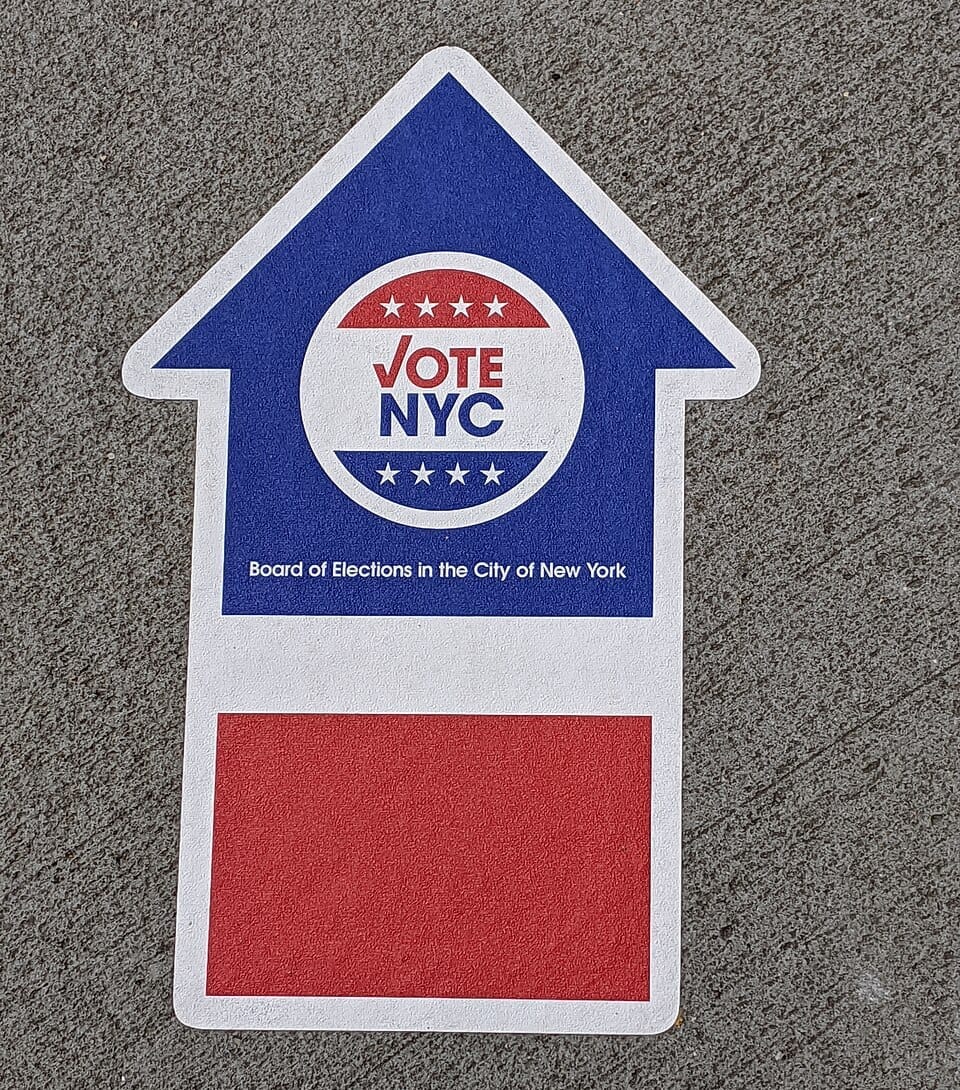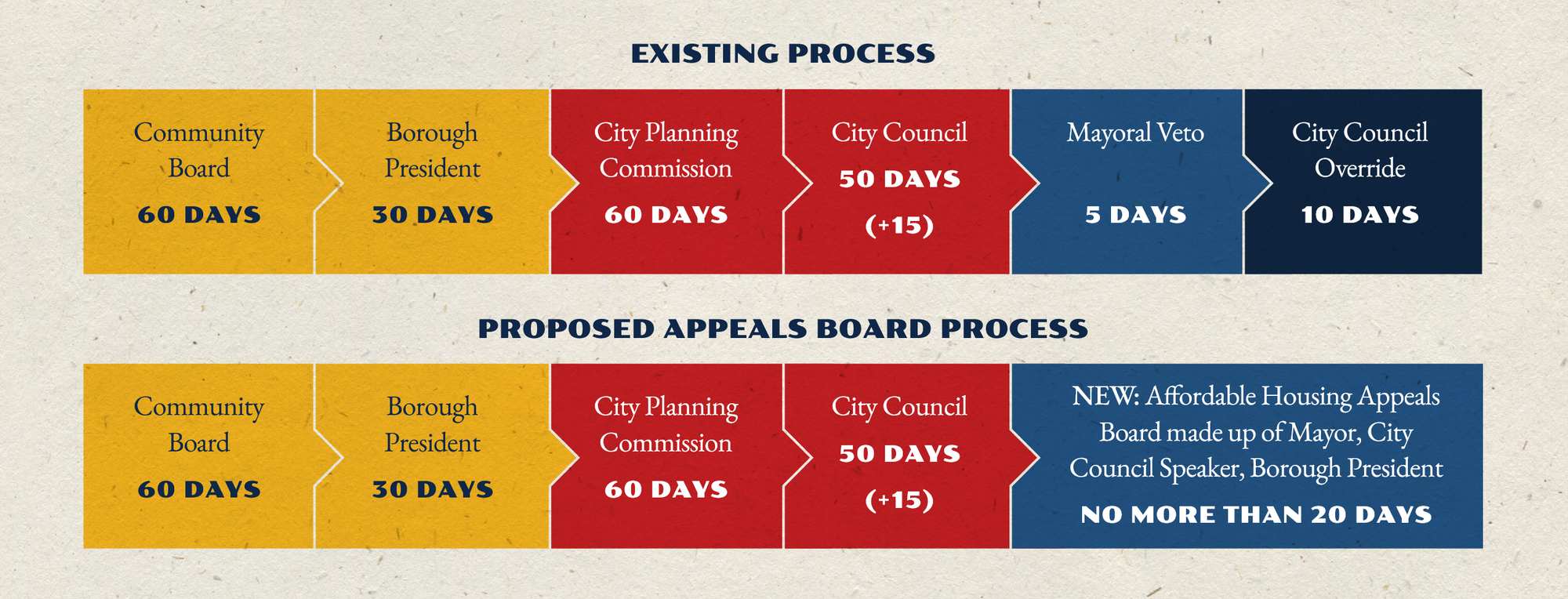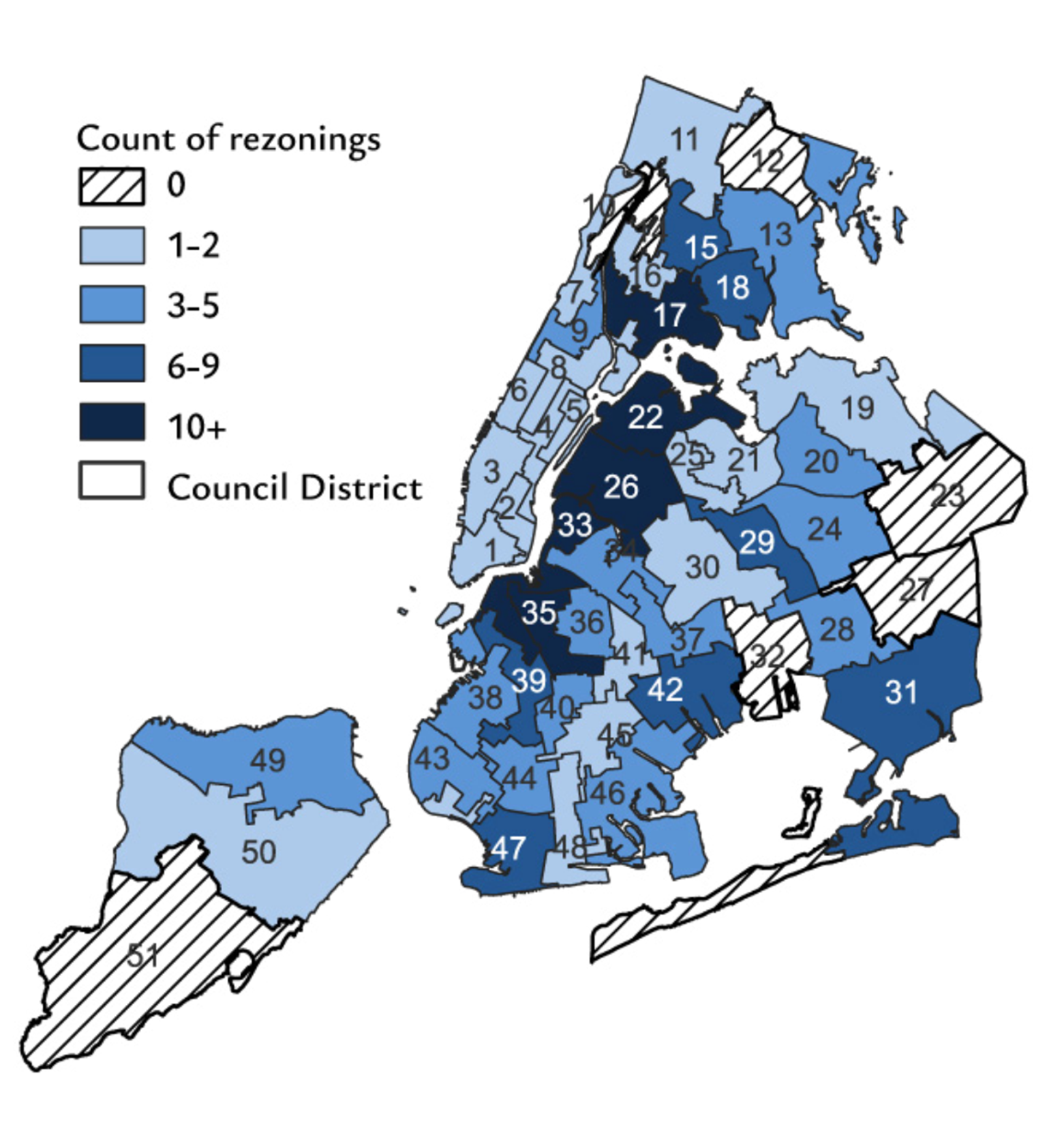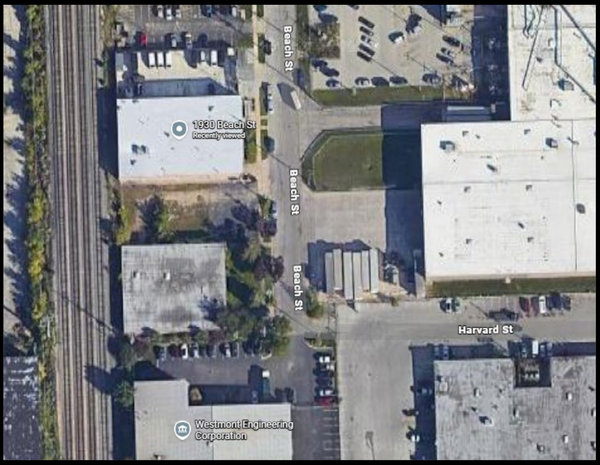Everything to Know About This Year's "Most Controversial" Ballot Question
Prop 4 could create thousands of units of mostly market-rate housing across the city, though it may come with risks for the lowest-income New Yorkers

This year's ballot Proposals 2, 3 and 4 are designed to limit the City Council’s influence over developers' housing project applications. While almost every New Yorker agrees the city needs more affordable housing, the overly simplistic ballot text makes it hard to tell what kind of housing would actually be created. Let's break down the farthest-reaching and "most controversial" measure, Prop 4.
Prop 4 applies to all major housing project applications
Proposal 4 changes the approval process for all “applications creating affordable housing”. Many voters will likely assume the change only affects “100% affordable” or primarily affordable developments, but in reality, it applies to all sizeable housing projects in medium- and high-density areas.
The reason is that New York City's Mandatory Inclusionary Housing (MIH) program, passed in 2016, "requires a share of new housing in medium- and high-density areas that are rezoned to promote new housing production—whether rezoned as part of a neighborhood plan or a private rezoning application—to be permanently affordable".
So, an application that doesn't create any housing defined as "affordable" would be rare. The exception would be a development in a low-density area or a development which is both 25 or fewer units and under 25,000 zoning square feet. Small developments are unlikely to require the zoning changes that trigger this application process.
Power to the executive
Proposal 4 would transfer the final say on housing development applications from the Council to a new three-member board made up of the mayor, the local borough president, and the Council Speaker.
As a result, the mayor's priorities would likely be decisive in shaping what housing is built. Unless the mayor is willing to use veto leverage to negotiate higher levels of affordability (as many local Councilmembers currently do), developers would be free to build only housing that offers the minimum affordability levels under MIH.
On the other hand, a mayor's office with the will and capacity to negotiate with individual developers and advocate for local interests would be empowered to do so across the city.
“Affordable” housing isn’t always affordable
MIH requires sizeable developments to reserve a certain percentage of units as "affordable" at certain household income levels, with “affordable” meaning a rent under 1/3 of that income.
The City Planning Commission (CPC) and City Council currently set the percentages and income levels for a specific development during the application process, giving developers one or more choices from pre-determined options. 20-30% of the units must be “affordable”.
Depending on the choices given by the CPC and Council, the developer may be able to choose an average income as high as 115% of the "Area Median Income", or AMI, for occupants of affordable units. Hell Gate puts it this way:
And as always, when talking about "affordable housing" in New York City, one must ask the question, "Affordable for who?" These ballot proposals do not change the fact that affordable housing built under the MIH program uses a flawed "Area Median Income" formula, which states that 100 percent AMI is equal to $145,800/year for a family of three.
It also seems that the proposal would allow its new three-member Board (mayor, local borough president, Council Speaker) to overturn the choices given by the Council in favor of those proposed by the CPC, which is controlled by the mayor.
This is because the new Board is empowered to reverse both "disapproval" and "approval with modifications" decisions made by the Council, which would likely return the application to its state after the previous CPC review step.
In other words, under a friendly mayor, developers could likely ensure that they never have to meet more than the minimum MIH affordability option of 30% “affordable” units with an average cap of 115% AMI – $130,410 for an individual, and $167,670 for a family of three.
For this reason many tenant and neighborhood organizations warn that Proposal 4 could lead to a surge in market-rate and high-AMI units in low-income areas, accelerating gentrification and displacement. They reject that a citywide increase in market-rate and high-AMI housing would be worth the risk to the most vulnerable renters. Future ballot measures could address these problems with this year's proposals.
Developers and Zohran
A PAC headed by the chief of staff of the billionaire-backed “housing advocacy” group Open New York has pledged to spend $3 million in support of the city ballot measures. Its expenditures are $685,629 as of Sunday, and increasing daily. Open New York is among a number of industry-funded groups who contributed statements supporting the measure to the Campaign Finance Board’s informational site nycvotes.org.
The spending comes as leading mayoral candidate Zohran Mamdani has yet to take a position on the ballot measures. His silence is likely a strategic product of ties to both sides of the issue. He might be expected to support Prop 4 given that it expands mayoral power over development projects, and that powerful groups like Open New York often court the very progressives that bind his coalition together. But at the same time, that power would come at the expense of important allies in the City Council, and would align him with the real-estate lobby that donated millions to opponent Andrew Cuomo’s campaign.
More “MIH minimum-affordable” developments in districts that have opposed them
The City Council traditionally follows the direction of the local Councilmember when voting on projects in a specific districts, a practice known as "member deference".
Because the City Council, and therefore the local Member, have the final say in approving or rejecting a development under the current application process, Councilmembers can currently (if they wish) block developments that require applications from being built in their district.
Under Proposal 4, a majority vote of the new Board (mayor, borough president and Council Speaker) can overrule the Council, circumventing any attempts by a local Councilmember to block development applications.

Which districts?
The Charter Revision Commission included this map of adopted private housing applications by city council district from 2014 to 2024 in its final report on the proposals:

Six districts have approved zero applications in the last ten years, and five have approved at least ten. The high-approval districts cover rapidly developing areas such as Dumbo, Downtown Brooklyn, Brooklyn Heights, Williamsburg, Long Island City, and the South Bronx.
Reasons for local opposition
Some applications don't make it to the application process. The Council approved 92 percent of finalized applications, but 35 percent of projects that initiated the review process did not finalize their applications. Some of these may have been due to discovering Council opposition, but there are many possible reasons, per the Citizens Budget Commission:
The dataset does not include information on why some projects were withdrawn or rejected. Possible reasons include that the projects may not have been aligned with the City’s goals and would have been rejected by the CPC; may have been withdrawn after it was clear they would not be approved by the City Council; or may have been withdrawn for reasons internal to the applicant, such as ownership changes, land sales, inability to secure financing, or changing market conditions. Often, these applicants chose to build a different, as-of-right [no application/rezoning needed] project instead.
So, between districts that don't receive applications due to known opposition from their Council representative and applications that aren’t finalized for the same reason, there are a number of districts that could receive previously unfeasible developments if the proposal passes.
Reasons for Councilmember opposition to residential upzoning proposals could include a lack of true affordability, proposed housing types that are not a good fit for the district, or other negative community impacts, as discussed below. Supporters of Proposal 4 argue that a general resistance to building any housing at all, however, is a particularly impactful reason, and that allowing districts to negotiate for more truly affordable units discourages developers from pursuing new housing.
Less truly affordable private developments
The flip side of removing the leverage of the local Councilmember is they are no longer empowered to negotiate with developers for affordability beyond the MIH minimums. From the Red Hook Star-Revue:
For example, Julie Won, representing Astoria, used her ULURP clout to compel the developer of Innovation QNS not only to more than double the promised number of affordable units, from 711 to 1,436, but to designate more than 600 as deeply-affordable apartments for the formerly unhoused.
If you were a family of three applying to the “affordable housing” lottery at 360 West 43rd Street, you would need a household income of 130 percent AMI, which, for a one-bedroom apartment renting at $2,900 a month, translates to a minimum household income of $99,429 and a maximum household income of $181,740. This is why some housing activists advocate for “deeply-affordable housing” as opposed to “affordable housing.”
"Deep affordability" is defined as units reserved for households making 40% of AMI.
Other examples of Councilmembers negotiating greater affordability include Essex Crossing (Carlina Rivera in the LES), Arrow Linen (Shahana Hanif in Windsor Terrace) and Hallats North (Tiffany Caban in Astoria).
MIH minimum-affordable effects on communities
Since MIH minimums generally require zero (and at most 10%) units to be deeply affordable, and only 30% to be AMI-affordable overall, communities with very low-income residents vulnerable to displacement may be affected by gentrification and the changes to the neighborhood that could be associated with additional MIH minimum-affordable housing. A 2020 City Limits opinion piece was particularly harsh:
The fact is that MIH is just bad policy. In New York City’s housing market, it mostly enriches developers and real estate speculators while inflicting real harm to the neighborhoods it’s supposed to help.
In an effort to address these sentiments, in 2021 the City passed a requirement to conduct racial-equity studies for proposed rezonings, such as the Gowanus neighborhood plan. Though its too early to know the actual demographic changes, the Gowanus study actually predicted an increase in diversity for the proposed rezoning. From THE CITY:
That’s partly because, under the zoning proposal, the neighborhood could gain as many as 2,950 housing units rented at below-market-rate prices through the city’s affordable housing lottery, out of a total 8,495 newly constructed apartments.
All but 380 of the lottery units will be set aside for households making no more than 80% of the area median income, which comes to $85,920 for a family of three.
It's important to note that the Gowanus Neighborhood Plan (with its relatively high levels of affordable units) was developed by the Department of City Planning with extensive inputs from community members, rather than by a private developer. Private developers would be unlikely to propose affordability levels greater than the MIH minimums.
Other negotiated benefits
Aside from deeper affordability, Councilmembers can also negotiate with developers for other benefits, and exercise sway over what types of projects move forward. From THE CITY:
Councilmember Sandy Nurse, speaking for the Council, said the fast-track proposals are likely to result in the wrong kind of housing for her districts like hers. When a city agency teams up with a non-profit they frequently want small units with income requirements that won’t help families or the people who live in her North Brooklyn district.
The appeals board could eliminate one of the most important roles the Council plays in land use decisions when it forces the city to provide infrastructure and other investments to win approval for additional housing.
“You can’t put 4,000 more people on a block that is surrounded by potholes,” she told THE CITY.
Similarly, in an interview this week on the upcoming ballot proposals, the vice president of the Morningside Heights Community Coalition, Robert Stern, told the Columbia Spectator:
“We can’t have a giveaway to the real estate developers completely, and I do think that these proposals are a giveaway.”
Stern has long negotiated affordable housing in the neighborhood. He is conscious of the ways local officials have leveraged their power in the process of supporting more housing. He cited the Community Benefits Agreement, a list of commitments—amounting to $170 million in investments—Columbia made to West Harlem in 2009 in response to the University’s expansion into the community, as an example of local pressure leading to change.
“That would not have come about without local elected officials applying pressure on Columbia to provide community benefits,” Stern said about the CBA.
Under the proposal, communities local to a potential development would only make up a small part of the votes sought by the city- (and borough-) wide electeds that have the final say via the Board, severely limiting their ability to influence negotiations.
For these reasons, voters might want to weigh potential increases in MIH minimum-affordable housing against this loss of local leverage against developers. But what about centralized leverage?
A mayor who prioritizes truly affordable housing could negotiate for it in all districts
Proposal 4 strips power from the City Council and awards it to the mayor, who would gain a 1/3 share of the final say in housing applications.
A mayor with allied borough presidents would have the same leverage over developers that local Councilmembers currently possess. The difference would be that the mayor could negotiate developments citywide, as opposed to individual Councilmembers taking initiative only in their districts.
Supporters of leading mayoral candidate Zohran Mamdani may see this proposal as a tool to help him fulfill his plan to create 200,000 publicly subsidized, permanently affordable, union-built, rent-stabilized homes over the next 10 years.
However, even if Mamdani is elected, this proposal would remain in effect for future mayors as well, and its worth noting that the mayor’s office has many competing priorities. A mayor’s capacity to negotiate with specific developers and advocate for local interests will likely be less than that of a district Councilmember.
A developer-friendly mayor could cap housing production at MIH minimum-affordability in all districts
Private developers want as few of their units to be affordable as possible in order to generate higher profits from rents. A mayor who prioritizes developer profitability and has support from the borough president could block any attempts by local Council representatives to increase the development affordability beyond the minimums required by MIH.
The prospect is not just a hypothetical, given that second-place mayoral candidate Andrew Cuomo has taken millions from the real estate industry, including executives of firms with pending housing applications.
Parting thoughts
As reported by Hell Gate, this year's housing ballot questions are controversial, particularly 4. I hope the information in this article is helpful as you go to the polls.
As a disclaimer, I'm not a housing expert and I conducted this research simply out of curiosity and a desire to be informed at the ballot box. I'm sharing it here because I've felt that the information on this issue available in the media could use additional nuance, detail and analysis.
In the interest of accuracy, if you have a correction, a relevant perspective or bit of information, a question, or any thoughts at all, feel free to leave a comment below or email me at tylerdouglasnyc@proton.me.





